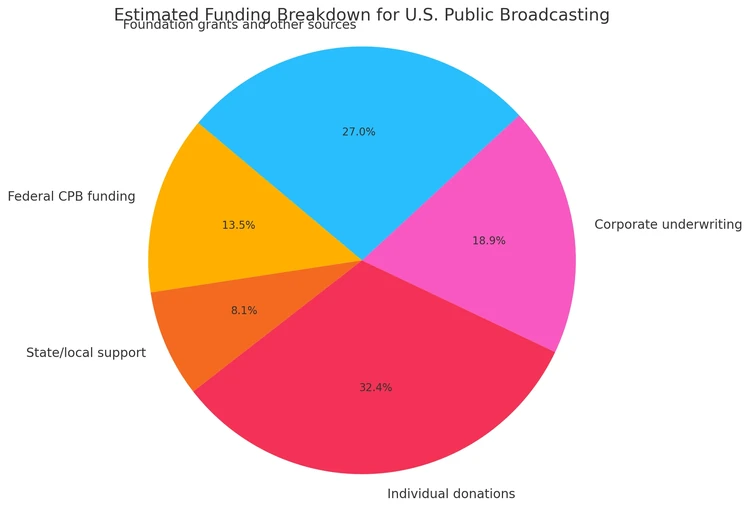Consumers who have been supporting local stations may lose programming
As expected, Congress has clawed back funding for public broadcasting in the U.S., culminating an effort that started during the Nixon Administration, led by conservatives who objected to what they say is a liberal taint in the system's programs.

Despite extensive coverage, there has been little attention paid to the consumers who are a major source of funding for public programmingeven though they contribute the largest share, approximately 30%, most of it coming from occasional fund-raising drives and monthly contributions.
Other major sources include foundation grants at 25% and corporate underwriting, about 15% to 20%. Federal funding amounts to 10% to 15%, depending on the station, with states, cities and other sources making up the rest.
Listening to National Public Radio newscasts this morning, there were frequent mentions of impending doom, ignoring the old journalistic principle that one should downplay one's own involvement in a story. There was next to no mention of the $8 billion clawback of foreign aid, which dwarfs the $1.1 billion snatched back from public broadcasting.
One Washington, D.C., station sent out urgent emails Thursday afternoon, hours before the House voted to go along with the Senate to cut public broadcasting's funding.
"Im writing today as someone who shares your belief that trusted journalism is essential for our community and for our democracy.Federal funding for public media has been eliminated."
The email went on to say the loss would amount to "$1.5 million each year about 4-5% of our budget." Given the prominence awarded the story, one might have expected that figure to be higher.
Did it outgrow its roots?
What has come to be known as "public" broadcastingwas originally described as educational broadcasting when it was launched during the Johnson Administration.
There had been educational stations long before 1967, when the Public Broadcasting Act was signed. They were licensed mostly to universities or public school systems and broadcast programming that was intended primarily for use in schools, targeting rural school systems and those in impoverished areas.
Educational radio stations often broadcast mostly classical music and some carried lectures and other instructional programming. Stations licensed to universities trained students who were seeking careers in broadcasting.
Initially, the stations were prohibited from carrying advertising and were warmly supported by commercial broadcasters, who were relieved at not having to produce low-profit educational programming themselves.
Eventually, both the radio and TV stations formed networks to share programming and soon NPR and PBS were producing live news broadcasts, syndicating supposedly high-brow entertainment programming and seeking corporate and foundation underwriting which in many cases grew to closely resemble advertising.
Opinions aside ...
Leaving aside the question of political bias, critics contended that much of what public broadcasting does today needlessly duplicates the content to be found on the internet and on the hundreds of cable and streaming channels now available nearly everywhere.
Stations are now expected to urgently increase their campaigns for funds from viewers and listeners while also stepping up appeals to foundations and corporate underwriters.
They may also have to take a page from the commercial broadcasters and publishers who deal daily with declining audience share, risingcosts and changing audience tastes.
Consumers who for years have invested funds in their local stations may want to make their feelings known and encourage their stations to work harder to stretch every dollar, or to willingly increase their donations if they find public broadcasts to be worthy of increased support.
Posted: 2025-07-18 14:08:00
















